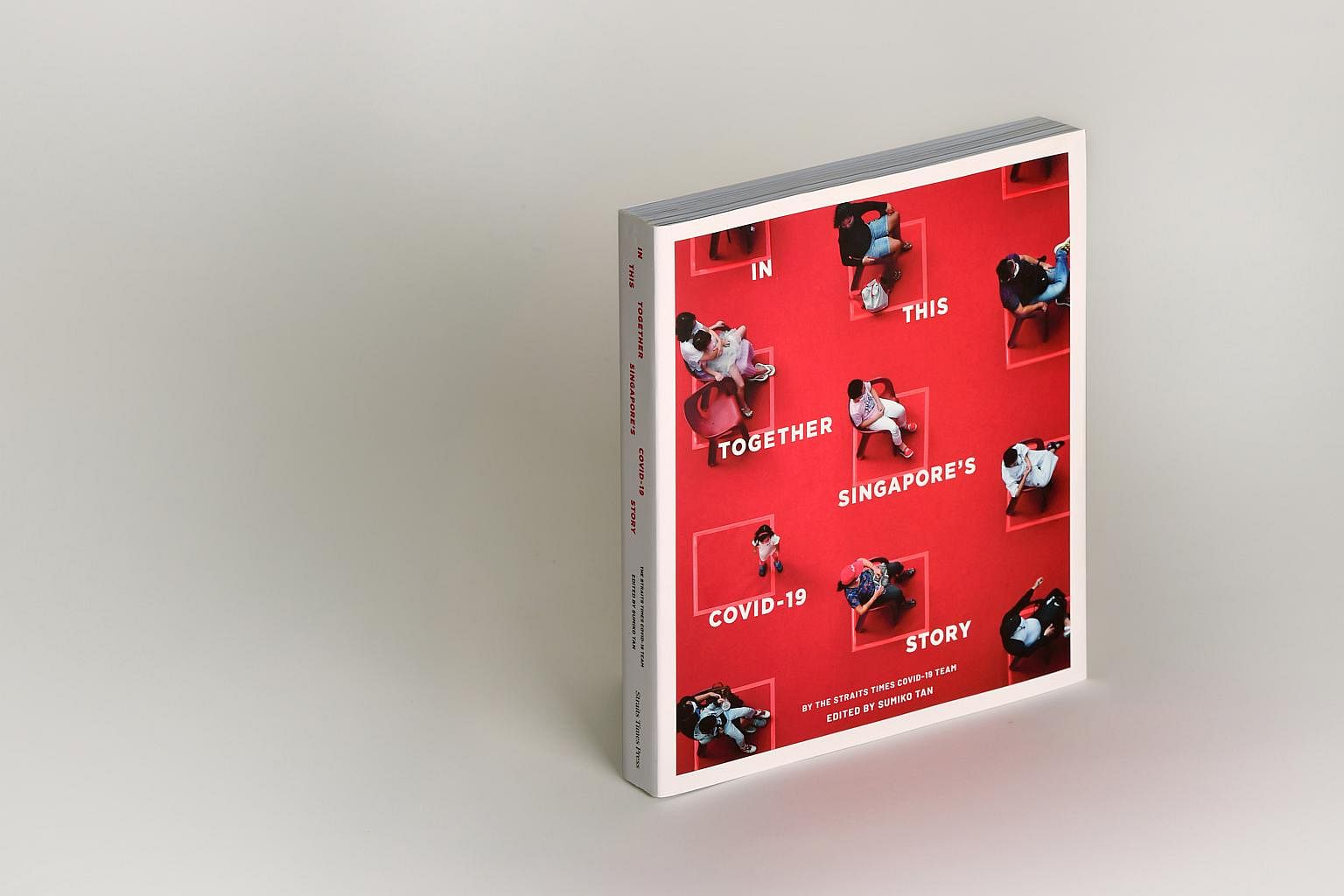SINGAPORE - In a new book about Singapore's fight against the Covid-19 pandemic, Health Minister Ong Ye Kung turns to a popular sport to explain why he prefers to call healthcare workers "the last line of defence" rather than "front-liners".
"There are games where everybody just attacks and you're the only one left, and at every counter-attack, you feel overwhelmed. I thought that must be what a healthcare worker felt at that time," said Mr Ong in a chapter titled "Battle in the hospitals", where he talked about October last year when the Covid-19 Delta variant led to over 3,000 virus cases daily and the death toll climbed.
"The rest of the society wants to move on but they were carrying the can."
Mr Ong's interview appears in the book In This Together: Singapore's Covid-19 Story published by Straits Times Press, which lays out in 13 chapters Singapore's multifaceted fight against the virus.
In the book launched on Thursday (Jan 20), the chapter "Battle in the hospitals" relates how the healthcare sector had to shoulder the lone, massive responsibility of treating and caring for the infected from the moment the virus arrived in January 2020 - at least until the home recovery scheme started late last year.
Healthcare workers such as nurses also share stories about managing anxious and distraught family members who were kept away from their loved ones, of being shunned by the public, and feeling helpless and overwhelmed when patients died.
When the Delta variant began wreaking havoc from August last year, there was no time to rest for healthcare staff like Singapore General Hospital assistant nurse clinician Chester Chow, 32.
He recalls in the book how he could be in a room with a critically ill patient for up to three hours, carrying out one procedure after another. And sometimes, family members would take out their frustrations on the staff.
"At different points in time, some of us wanted to give up," Mr Chow told journalists from The Straits Times. "But we talked, supported and encouraged one another."
Paranoia over healthcare workers being contaminated with the virus also spilled over at the initial stages of the pandemic, causing some to avoid wearing their uniforms while taking public transport.
National University Hospital senior staff nurse Nathanael Tan was in regular clothes when he hailed a taxi to work one day. Yet, he was quizzed by the driver on why he was going to the hospital's emergency department before the cabby eventually allowed him to board.
The cabby kept his windows down for the entire trip, said Mr Tan, 30.
The number of abuse or harassment cases reported by public healthcare workers rose from 1,200 in 2019, to 1,400 as at the end of November last year, while 1,500 workers resigned in the first half of 2021, compared with 2,000 annually before the pandemic.
But Singaporeans have by and large rallied behind healthcare workers, with recovered patients interviewed for the book expressing appreciation and recognition for them as heroes of the pandemic.
The private healthcare sector also chipped in to alleviate the burden on public institutions.
In January 2020, IHH Healthcare Singapore, the largest private group here, was called on to set up screening for travellers at 10 land and sea checkpoints within 24 hours.
The group tapped its pool of over 5,000 employees to man the checkpoints, with chief operating officer Noel Yeo doubling up as a temperature screener as well as a medical doctor assessing cases, he reveals in the book.
IHH's Mount Elizabeth Hospital also took in Covid-19 patients and provided manpower to take swab samples at worker dormitories, and staff the community care facility at Singapore Expo.
IHH and other private medical groups were also roped in for the national vaccination programme, and when infections rocketed last year, IHH provided laboratory testing services.
Once some teething problems were sorted out, the home recovery scheme also eased the strain on the healthcare system, and is now the default for most patients with no or only mild symptoms.
In the book, a social worker who gave her name as Charlyn recounted some of the "logistical acrobatics" behind recovering at home.
Throughout her 10-day isolation, the 35-year-old tried to stay in her bedroom as much as possible, to not put her parents, grandfather and domestic helper at risk.
She would step out to shower - and then disinfect the ceiling, walls and floor of the bathroom while nursing a fever and a splitting migraine.
"I would be panting and sweating when I reached my bedroom," she said.
Charlyn also used her grandfather's commode to relieve herself in her room, saying: "It was initially uncomfortable but I got used to it."



